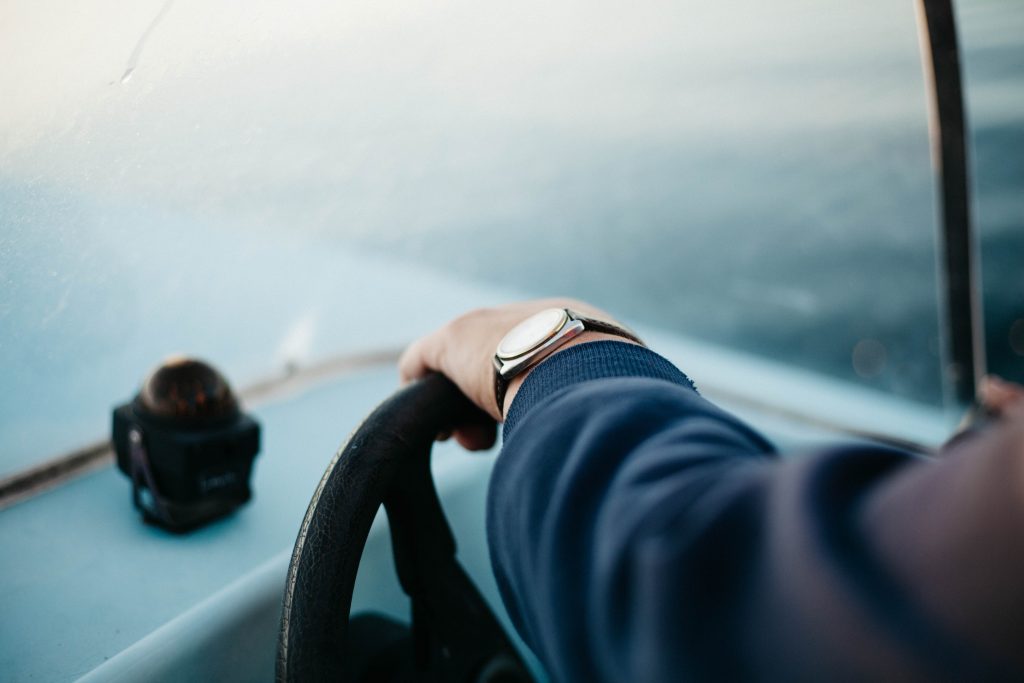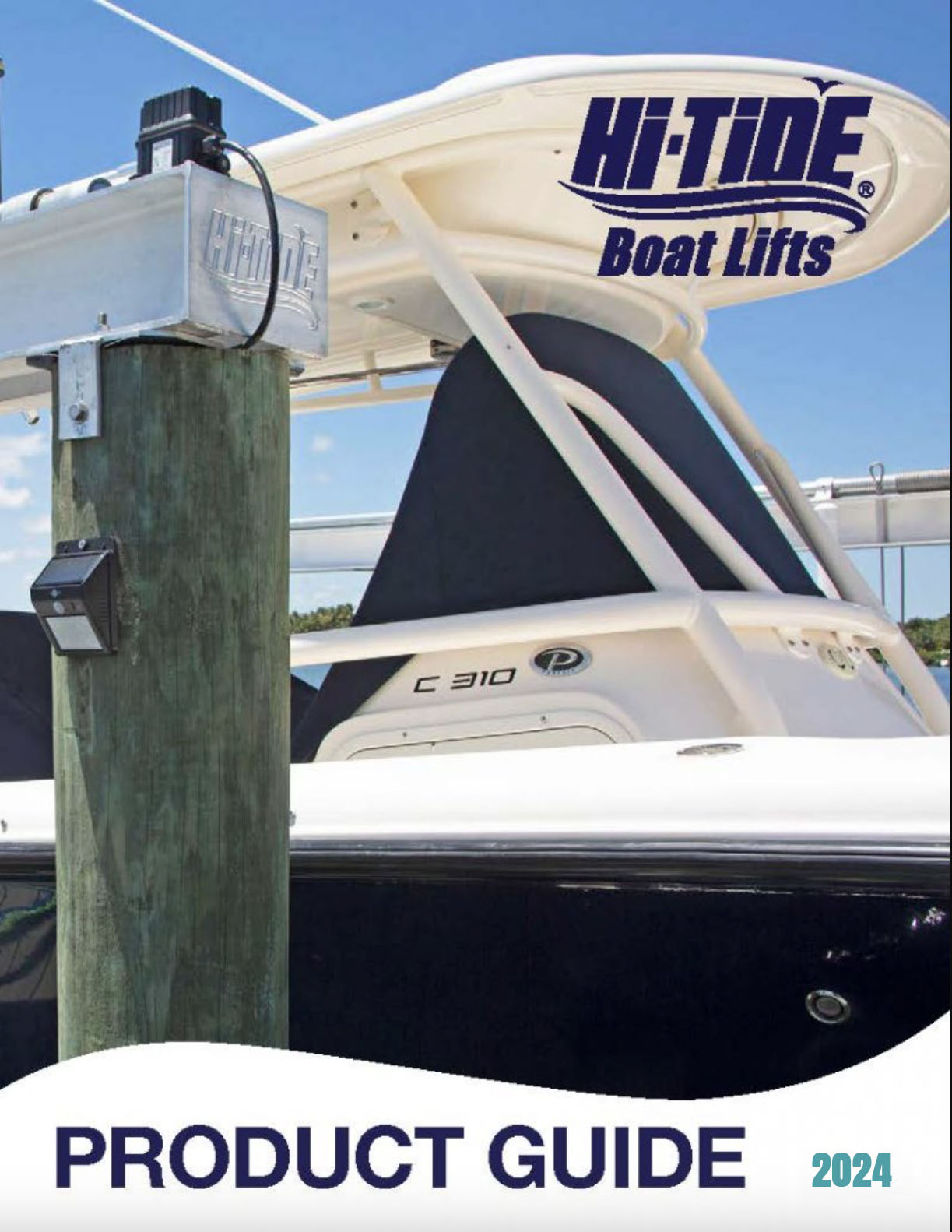
When on the water, you want to know someone’s got your back. Conditions can quickly change, accidents happen, and unexpected engine trouble or other unknowns can come fast. Of course, many of us prepare for the worst (and hope for the best) when we go boating but preparation can only do so much. We could all use a safety net in a worst case scenario, and that’s just what a float plan provides.
What is a Float Plan?
New boaters may not be familiar with the idea of a float plan but simply stated, it is a document that shares vital information about your planned trip. Before your trip, you can fill out this extensive form that includes specifics on your vessel, identification information, passengers and planned timelines/itinerary for your trip that could all help in your rescue, should you need it.
Once completed, this form should be left with a reliable person who will not be joining you on your trip. Let them know when you are expected to return, as well as your trip plans (locations, planned course, timetables). Update this person if your plans change, as they may mistakenly alert authorities if you are later than expected.
Why Do I Need a Float Plan?
You may look at the idea of a float plan as an unnecessary trouble, it is anything but that. As we stated at the top, there are plenty of ways even the best-planned boating trips can go south. The sheer amount of unknowns is enough to warrant this extra measure that could literally save your life in a worst-case scenario.
Not just cruisers or yachts need float plans either. Jet Skiers, kayakers, rafters, canoers and more should all prepare and share float plans as well–yes, even if the planned trip is a relatively short one.
Regardless of your vessel, the length of your planned trip or the extent of your planning, you could always use someone who has your back just in case the worst happens when you’re on the water. As they say, it’s better to be safe than sorry, and this is certainly one of those times. Be safe out there, complete a float plan and we’ll see you on the water.
Download Your Floating Plan Here:
http://floatplancentral.cgaux.org/download/USCGFloatPlan.pdf

Shopping for a used vehicle is a fairly run-of-the-mill process for most people. You go do a dealership, give the vehicle a lookover, maybe take it for a test drive, perhaps call a mechanic for a quick inspection and settle on a price. What many people don’t have quite as much experience with is buying a used boat. So, if you find a used boat that seems like a steal, what should you do to make sure it’s not a money pit in the making? We’ve got a few tips that may be just what you need.
Tips to Consider Before Buying a Used Boat
- Start Your Engines: Do not buy a boat if the seller doesn’t first let you start the motor(s). A lot can be learned from simply seeing how an engine or motor turns over and idles. Is there smoke? Excessive shaking or noise? Does it take a few tries to get started? All can be signs of engine trouble (but are not necessarily dealbreakers).
- Check the Oil: The condition of boat’s oil can be a great barometer for how the engine is performing. If it appears overly dark, gritty or even watered down, you may want to investigate further.
- Inspect the Electronics: Rewiring can be a pain, and faulty electronics can lead to serious fire or electrocution risks. Be sure that there are no signs of melted, burned or frayed wires before putting your money down.
- Look for Damage: This one may seem a bit basic, but any visual signs of hull cracking or water damage on the deck should be closely inspected to ensure they’re easy fixes or simply cosmetic issues. Be wary of boats that have a history with collisions, as they may have serious damage hidden just below the surface.
- Ask an Expert: Just like with used cars, when in doubt, ask an expert to provide an inspection. You may not be a boat mechanic, but especially if anything doesn’t seem quite right about the vessel, you should absolutely ask a professional to come in and provide insight that you wouldn’t have otherwise.
By testing the engine, checking the oil, inspecting electronics and wiring, looking for damage and calling in an expert, you can buy a used boat with a bit more confidence. Rule of thumb, however, if you’re unsure about the boat, it’s probably not worth the risk of buying a lemon. Happy hunting and we hope to see you on the water soon!
With New Year’s resolution season in full swing, you may be planning to put in work at the gym, start healthier eating habits or commit to reading more books. Though all of those resolutions are great, boaters might want to put a little thought into making 2019 a better year on the water as well.
That’s where we come in, friends. Here are our boating tips and resolutions you may want to keep coming into the new year. We promise, zero gym time is required.
Boating Tips and Resolutions for 2019
- Keep it Clean: Don’t be trashy. Though it may be tempting to simply discard your snack wrappers, plastic bags, cans and bottles overboard, doing so immediately damages the environment and puts the sea life you share waters with at risk. Keep a garbage bag onboard and dispose of your trash responsibly once back ashore.
- Make a List and Check it Twice: Lists aren’t only for Santa. Making a six-month or quarterly checklist for your boat maintenance can go a long way to ensure smooth sailing all year long.
- Be Storm-Ready: Before next hurricane season begins, get your plan in place. Though current meteorology often gives us a little more time to react before landfall, hurricanes are still wildly unpredictable. Having a plan in place to secure your vessel and evacuate will help avoid panic and keep you safe.
- Boat Somewhere New: Though we all have our favorite spots, make a resolution to explore new waters. Do some research and stay safe, but enjoy a little adventure on your next trip.
-
Boat More Often: Look, this may sound like a bad excuse to have more fun…and it kind of is. Life is short and times can be hard, but make sure you save some time to kick back and enjoy this hobby, passion and lifestyle we all love.
With a new year and new you, why not make now the time you commit to keeping waterways clean, making a safety and maintenance checklist, creating a hurricane plan, trying out a new waterway and boating more often in 2019? We promise all of these resolutions are easier to keep than that all-kale diet or spinning class you just enrolled in. From all of us at Hi-Tide Boat Lifts, may your 2019 be full of fun on the water!

Whether you call them your four-legged friends, fur babies, or Fido, dogs are seen as extensions of family. As such, many boaters would love to bring their dog with them when they go boating, but are afraid of the dangers in doing so. Luckily, there are a few easily incorporated safety tips for boating with dogs that will keep your pet safe on the water.
Top Tips for Boating with Dogs
- Life Jackets: Not just for humans, a well-fitting life jacket on your dog can save its life if it were to go overboard. Just like your own PFD, ensure the life jacket properly fits your dog, is a bright, easily spotted color and has a handle to help you rescue your dog, should the need arise. Once you find the right fit for your pooch, safely allow them to test out a bit of swimming to ensure they still have a full range of motion with the vest on. Even if your dog is a great swimmer, rough waters, rain or exhaustion can be real dangers for dogs without life jackets.
- Fresh Water: Though boating can be fun, being out in the elements can work up a thirst in both people and pets. Make sure you have enough fresh water (and a bowl) for your dog to stay hydrated on your trip.
- Get Acquainted: Some dogs can get a bit skittish in new environments–especially on a boat, with its loud noises, vibration and movement. Before starting the trip, get your dog well-acquainted with your boat, until they seem comfortable and know the general layout of the vessel. When beginning your trip, ensure your dog isn’t overly nervous or showing signs it may try to abandon ship.
- Keep it Short: There is no telling how your dog will react to being on a boat for the first time, so plan on a shorter trip for their maiden voyage. If they seem to quickly get their sea legs and enjoy boating as much as you do, then you can safely begin to extend their time on the water.
- Sun Protection: Just like humans, dogs can get sunburned. Try to keep your dog out of direct sunlight for too long, and be sure to apply dog-friendly sunscreen (unscented sunscreen or pet sunscreen), especially on their more exposed underbellies. Some even recommend “doggles” (yes, that’s goggles for dogs), which don’t only look cute but also protect your dog’s eyes from the harsh sun.
- A Place to “Go”: When nature calls, make sure your dog has a place to “go.” So, place down pads, carpets or turf to keep their dog from relieving itself anywhere it sees fit on the deck. Also, be sure to walk your dog before disembarking to try to avoid accidents altogether.
Boating with dogs can be a lot of fun, but the above tips can help ensure your next trip is smooth sailing with your favorite furry friend. So, with your pooch properly strapped into a life jacket, equipped with doggles, protected by sunscreen, and properly hydrated (after a pre-trip bathroom break), we hope you have a great time on the water!

You don’t have to be a frequent boater or conservationist to have heard the fear and dread spreading around the words “red tide.” Making headlines across the state of Florida and beyond, the threat of red tide is very real, but do you understand the risks it poses to wildlife and swimmers? Let’s break down some fast facts to make sure you’re staying safe on the water.
What Do I Need to Know About Red Tide?
What is red tide? Red tide is a harmful algae bloom caused by an overabundance of nutrients in the water, allowing the algae to feed and grow.
What causes red tide? Though red tide occurs naturally, some scientists point to runoff from septic tanks and agriculture for further fuelling algae growth.
Why is red tide harmful? Simply put, the red tide algae is harmful due to two major factors: it produces toxins and can decrease oxygen in the water.
What can be negatively affected by red tide? Everything and everyone in or around the affected waters. Fish can be strangled by the lack of oxygen in the water, die due to the toxins produced by the algae or harm the predators that consume them. Shorelines can become littered with dead sea life, leading to less-than-fun beachgoing conditions. Human swimmers risk skin and eye irritation, as well as respiratory issues in red tide conditions. Winds can even blow toxins onto land, affecting those nearby.
Can I fish during a red tide? Fish may be safe to eat (as long as they are filleted and guts are disposed of) but shellfish should be avoided.
Is it safe to boat during a red tide? Yes! However, you will want to check in on the Florida Fish and Wildlife Commission’s updated red tide status and steer clear of affected areas (especially if you plan on swimming).
Red tide is bad news for our shorelines and those who call them home. From the ecosystem to the economy, this bloom of microscopic life can spell big problems for Florida. But as we deal with this unfortunately frequent issue, understanding its dangers can help keep your next day at the beach or boating adventure from drifting into murky waters.
For more information on red tide, visit this helpful FAQ from the Florida Fish and Wildlife Commision.





